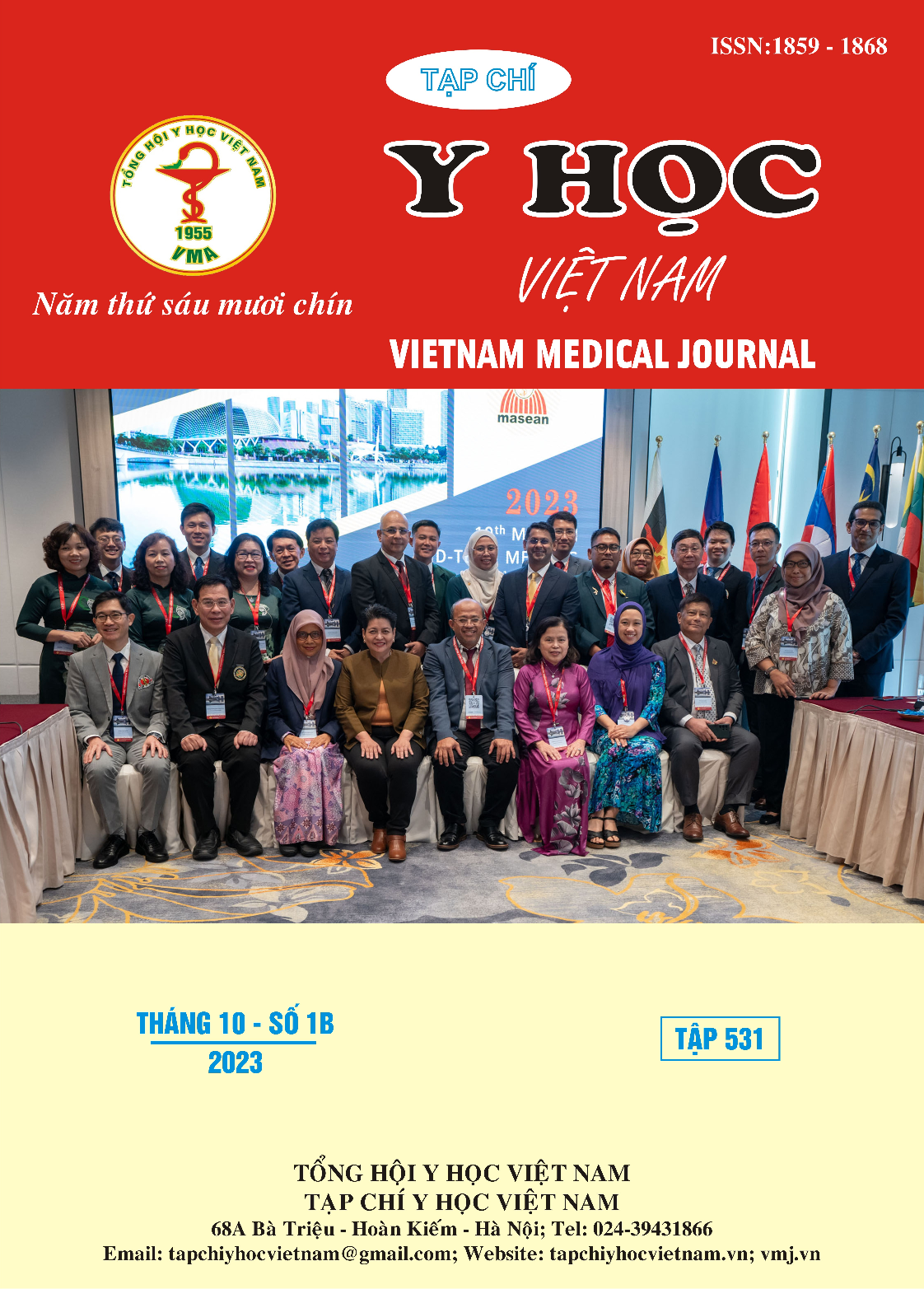THE CHARACTERISTICS OF MANDIBULAR BUCCAL SHELF IN CLASS III PATIENTS USING CONE-BEAM COMPUTED TOMOGRAPHY
Main Article Content
Abstract
Objective: To evaluate the mandibular buccal shelf (MBS) in Class III patients using cone-beam computed tomography (CBCT). Reasearch methodology: Cross – sectional describle study on 30 CTCB films of Class III patients at the Institute of Odonto-Stomatology – Hanoi Medical University. On CTCB images, the angulation, buccal bone depth (4 and 6 mm from the cementoenamel junction [CEJ] of MBS), and buccal bone thickness (6 and 11 mm from the CEJ of MBS) were measured at the mesial and distal roots of the mandibular first and second molars. Results: There were no statistically significant differences in the angulation, depth, and thickness of MBS between male and female patients, left side and right side. The values for the bone around the distal root of the mandibular second molar were significantly greater than the other values. The bone depth was greater at 4 mm than at 6 mm from CEJ, while the thickness was greater at 11 mm than at 6 mm from CEJ, angulation was increased from the anterior to the posterior area. Conclusions: MBS provides an optimal bone surface for miniscrew insertion, with better osseous characteristics at the distal root of the mandibular second molar, 4 mm from CEJ
Article Details
Keywords
mandibular buccal shelf, CBCT, Class III patients.
References
2. P C, RNI DG. Epidemiologia delle malocclusioni su un campione di bambini delle scuole elementari del Comune di Roma. Ortogn Ital. 1995;4:217-228.
3. L. A. Frequency of the incidence of malocclusion in American Negro children aged twelve to sixteen. Angle Orthod. 1959;29(4):189-200.
4. W P, H F, D. S. Orthodontic diagnosis: the development problem list. In: Proffit W, Fields H, Sarver D, eds. Contemporary Orthodontics. St Louis, Mo: Mosby;. 2013:167-233
5. Yamada K, Kuroda S, Deguchi T, Takano-Yamamoto T, Yamashiro T. Distal movement of maxillary molars using miniscrew anchorage in the buccal interradicular region. Angle Orthod. Jan 2009;79(1):78-84.
6. Migliorati M BS, Signori A, Drago S, Barberis F, Tournier H, et al. Miniscrew design and bone characteristics: an experimental study of primary stability. Am J Orthod Dentofacial Orthop. 2012;142:228-234.
7. Baumgaertel S HM. Buccal cortical bone thickness for mini-implant placement. Am J Orthod Dentofacial Orthop. 2009;136:230-235.
8. Escobar-Correa N, Ramírez-Bustamante MA, Sánchez-Uribe LA, Upegui-Zea JC, Vergara-Villarreal P, Ramírez-Ossa DM. Evaluation of mandibular buccal shelf characteristics in the Colombian population: A cone-beam computed tomography study. Korean J Orthod. Jan 25 2021;51(1):23-31.
9. Nucera R, Lo Giudice A, Bellocchio AM, et al. Bone and cortical bone thickness of mandibular buccal shelf for mini-screw insertion in adults. Angle Orthod. Sep 2017;87(5):745-751.
10. Ramírez-Ossa DM E-CN, Ramírez- Bustamante MA, Agudelo-Suárez AA. An umbrella review of the effectiveness of temporary anchor- age devices and the factors that contribute to their success or failure. J Evid Based Dent Pract. 2020;20:101402.


